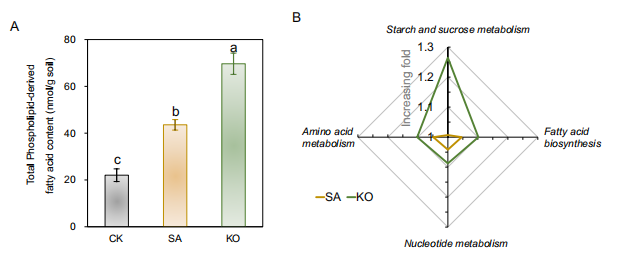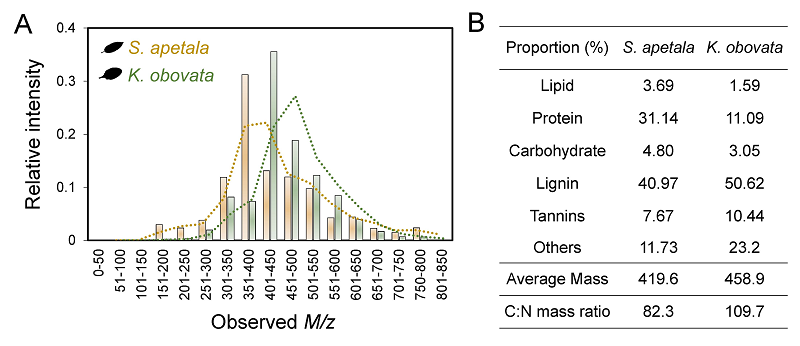Blue carbon sink capacity of mangroves determined by leaves and their associated microbiome
Mangroves, recognized as critical blue carbon ecosystems, play a pivotal role in global carbon capture and storage. However, the mechanisms governing microbial-mediated carbon transformation from leaves to the blue carbon pool during mangrove afforestation remain unclear. Addressing this gap, Dr. Zhe Lu, et al. investigate mangrove leaf DOM characteristics, microbial communities, and plant-derived carbon degradation potentials in introduced (Sonneratia apetala) and native (Kandelia obovata) mangroves. This study revealed distinct biogeochemical pathways for these mangrove species, shedding light on microbial strategies and leaf traits influencing blue carbon accumulation. These findings are vital for enhancing our understanding of the influence of leaves and their associated soil microbiome on the blue carbon sink capacity in mangroves.
This work has been published in Global Change Biology (https://doi.org/10.1111/gcb.17007). Dr. Zhe Lu, an associate professor from South China Botanical Garden (SCBG), Chinese Academy of Sciences (CAS), is the first author. Prof. Faming Wang, a professor from SCBG, director of Xiaoliang Research Station of Tropical Coastal Ecosystems, is the corresponding author for this paper, co-authors include Dr. Guoming Qin, Dr. Shuchai Gan from SCBG, CAS; Dr. Hongbin Liu from Hong Kong University of Science and Technology, Dr. Peter I. Macreadie from Deakin University, Wee Cheah from Universiti Malaya. This research is financially supported by the National Natural Science Foundation of China (U2106209, 32011530164, 32171594, 42007230), the CAS Project for Young Scientists in Basic Research (YSBR-037), ANSO collaborative research (ANSO-CR-KP-2022-11), the CAS Youth Innovation Promotion Association (2021347), etc.

Figure 1. PLFA microbial biomass and its partitioning of assimilated plant-C. (A) the changes in phospholipid-derived fatty acid (PLFA) content, which are presented as means ± SE for n = 3; (B) C partitioning in SA and KO soils. CK, SA, and KO represent soils sampled from the tidal flat control, S. apetala, and K. obovata, respectively.

Figure 2. The FT-ICR-MS-based characteristics of leaf DOM from Sonneratia apetala and Kandelia obovata. Their molecular contribution (A), and a summary of characteristics (B).